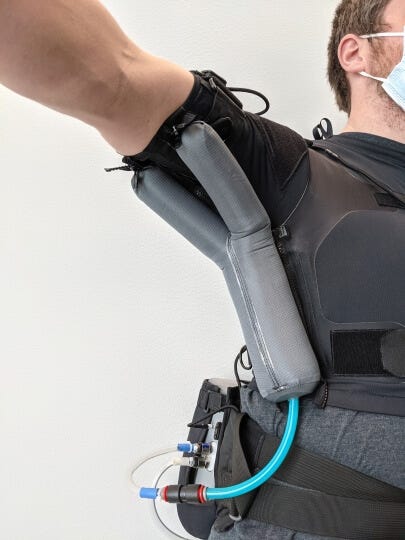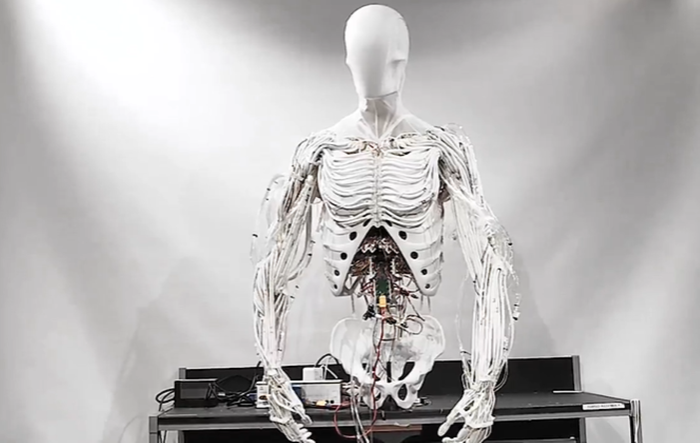Wearable Robot Improves Arm Function for ALS Patients
The device features balloon-like support and a sensor system to anticipate and assist motions

A new wearable robotic device has been developed to restore arm and shoulder function to ALS sufferers, helping them perform day-to-day tasks with increased ease.
Designed by a team from the Harvard John A. Paulson School of Engineering and Applied Sciences and Massachusetts General Hospital, the soft wearable robot features a sensor system that detects arm motion and applies pressure to aid the movement.
The prototype design is fabric-based and battery-powered to make it as comfortable as possible.
“This technology is quite simple in its essence,” said Tommaso Proietti, the paper’s first author. “It’s basically a shirt with some inflatable, balloon-like actuators under the armpit. The pressurized balloon helps the wearer combat gravity to move their upper arm and shoulder.”

Harvard John A. Paulson School of Engineering and Applied Sciences
The design was tested on 10 ALS patients, with results showing the wearable improved a user’s range of motion, reduced muscle fatigue and enhanced the ability to perform daily tasks such as holding objects.
“These systems are also very safe, intrinsically, because they’re made of fabric and inflatable balloons,” said Proietti. “As opposed to traditional rigid robots, when a soft robot fails it means the balloons simply don’t inflate anymore. But the wearer is at no risk of injury from the robot.”
While results were promising, the team said they are still several years away from commercialization.
In the future, the team hopes to apply the design to a wider range of conditions, such as spinal cord injuries or muscular dystrophy, or for those who have suffered a stroke. The team is also working on updating the design to respond to signals from the brain rather than from residual movement in the patient’s arm – targeting patients whose ALS is more progressed.
“This study gives us hope that soft robotic wearable technology might help us develop new devices capable of restoring functional limb abilities in people with ALS and other diseases that rob patients of their mobility,” said Conor Walsh, study author and leader of the Harvard Biodesign Lab.
About the Author
You May Also Like








